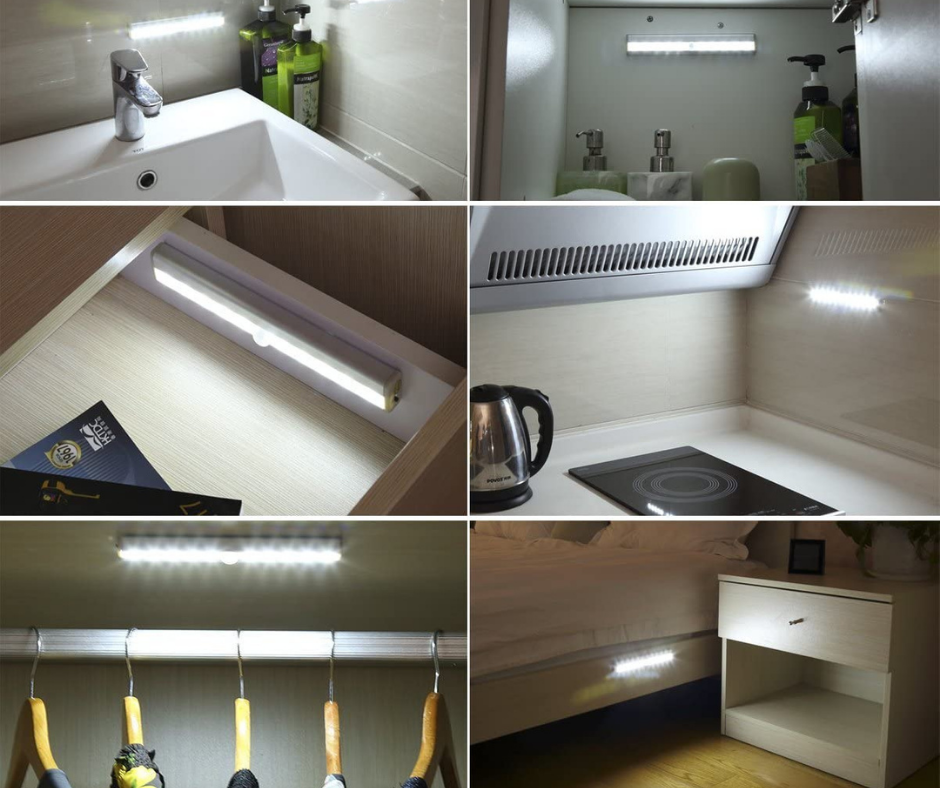
Introduction
In recent years, there has been a paradigm shift in the lighting industry with the widespread adoption of Light Emitting Diode (LED) technology. Among the various applications of LED lights, LED motion sensor lights stand out as innovative and efficient solutions for both residential and commercial spaces. These lights not only contribute to energy conservation but also enhance security and convenience. In this comprehensive exploration, we will delve into the key features, benefits, applications, and the future prospects of LED motion sensor lights.
Understanding LED Motion Sensor Lights
LED motion sensor lights combine advanced LED technology with motion detection capabilities, creating a versatile lighting solution. Unlike traditional lighting systems that operate continuously, LED motion sensor lights are designed to activate only when motion is detected within their range. This intelligent feature not only conserves energy but also provides an added layer of security and convenience.
Key Features
- Energy Efficiency: LED lights are known for their energy efficiency, and when integrated with motion sensors, they become even more eco-friendly. By activating only in the presence of motion, these lights eliminate unnecessary energy consumption, contributing to lower electricity bills and reduced environmental impact.
- Motion Detection Technology: The core functionality of LED motion sensor lights lies in their motion detection technology. Infrared sensors or other advanced technologies are employed to detect movement within a specified range, triggering the light to turn on. This feature is particularly useful for enhancing security by deterring potential intruders.
- Adjustable Sensitivity and Range: Many LED motion sensor lights come with adjustable sensitivity and range settings. This flexibility allows users to customize the light’s response to motion, ensuring optimal performance for different environments and applications.
- Durability and Longevity: LED lights are known for their durability and long lifespan. When integrated into motion sensor lights, they maintain these qualities, making them a reliable and cost-effective lighting solution. The solid-state construction of LEDs also makes them resistant to vibrations and shocks.
- Versatility in Design: LED motion sensor lights are available in various designs and form factors, catering to diverse aesthetic preferences and functional requirements. From compact and discreet designs to more prominent fixtures, there is a wide range of options to suit different spaces and applications.
Benefits of LED Motion Sensor Lights
- Energy Savings: The primary advantage of LED motion sensor lights is their ability to save energy. By operating only when needed, they significantly reduce electricity consumption compared to traditional lighting systems, contributing to lower utility bills and a smaller carbon footprint.
- Enhanced Security: The motion detection feature enhances security by illuminating areas when motion is detected. This not only discourages potential intruders but also provides residents or employees with a sense of safety and awareness.
- Convenience and Safety: LED motion sensor lights offer hands-free illumination, promoting convenience and safety in various settings. They are particularly beneficial in areas like hallways, staircases, and entryways, where automatic lighting enhances visibility and prevents accidents.
- Extended Lifespan: LED lights have a longer lifespan compared to traditional lighting technologies. With motion sensor integration, these lights are not constantly in use, further extending their operational life and reducing the frequency of replacements.
- Cost-Effective in the Long Run: While LED motion sensor lights may have a higher upfront cost, the long-term savings in energy bills and reduced maintenance expenses make them a cost-effective investment over time.
Applications of LED Motion Sensor Lights
- Outdoor Security Lighting: LED motion sensor lights are widely used for outdoor security lighting around homes, commercial buildings, and public spaces. They provide an immediate response to movement, deterring trespassers and enhancing overall security.
- Pathway and Garden Lighting: These lights are popular for illuminating pathways and gardens. The motion sensor ensures that these areas are well-lit when someone is present, enhancing both safety and aesthetics.
- Indoor Spaces: LED motion sensor lights find applications in various indoor spaces, such as hallways, bathrooms, closets, and garages. Their automatic activation simplifies navigation and contributes to energy efficiency.
- Commercial and Industrial Environments: In commercial and industrial settings, LED motion sensor lights are employed for security and energy-saving purposes. They are often used in warehouses, parking lots, and loading docks.
- Emergency Lighting: LED motion sensor lights are integrated into emergency lighting systems. In the event of a power outage or emergency, these lights can automatically activate, ensuring visibility and safety.
Future Prospects and Innovations
As technology continues to evolve, the future of LED motion sensor lights holds exciting possibilities. Some potential innovations include:
- Smart Home Integration: Integration with smart home systems is likely to become more prevalent, allowing users to control and customize their LED motion sensor lights remotely through mobile apps or voice commands.
- Advanced Sensor Technologies: Ongoing advancements in sensor technologies may lead to more sophisticated motion detection capabilities, such as improved accuracy and the ability to differentiate between human and non-human motion.
- Energy Harvesting: Research is being conducted on incorporating energy harvesting technologies into LED motion sensor lights. This could involve capturing and storing ambient energy to power the lights, further enhancing their sustainability.
- Customizable Lighting Profiles: Future LED motion sensor lights may offer customizable lighting profiles based on user preferences, adjusting not only sensitivity and range but also color temperature and brightness levels.
Conclusion
Motion sensor LED lights represent a significant advancement in lighting technology, offering a perfect blend of energy efficiency, security enhancement, and convenience. Their widespread applications, ranging from outdoor security lighting to indoor spaces and commercial environments, showcase their versatility. As technology continues to progress, the future of LED motion sensor lights holds exciting possibilities, promising even greater energy savings, advanced features, and seamless integration into smart home systems. As consumers and businesses alike prioritize sustainability and efficiency, LED motion sensor lights are poised to play a crucial role in the illumination of the future.